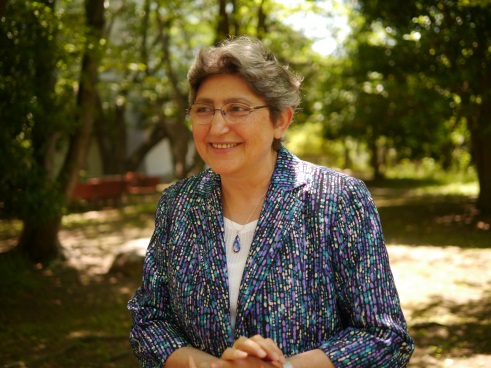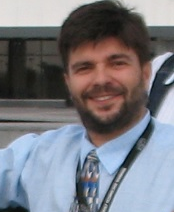 Prof. ROUMIANA TSENKOVA
Prof. ROUMIANA TSENKOVA
KOBE UNIVERSITY, JAPAN
VIS. PROF. - MEDICAL FACULTY OF KEIO UNIVERSITY IN TOKYO
Lecture on: AQUAPHOTOMICS: NEW TECHNOLOGY
view abstract
Roumiana Tsenkova was born in Ruse. He graduated the Baba Tonka Mathematical School in Ruse and Automation at the University of Ruse in 1978. He defended his engineering thesis in the field of Near Infrared Spectroscopy under the guidance of Professor NI Kirilin of the Moscow Academy of Agricultural Sciences. She worked as an assistant and associate professor at the University of Ruse before winning the Japan Scholarship.
Since 1990, she has been in Japan where she defends her second degree in agriculture at the Hokkaido University, and since 1996 she has been appointed associate professor at Kobe University, where in 2006 she became a professor and founded the first biomedical engineering laboratory at a Japanese university. Currently she is a visiting professor at the Medical Faculty of Keio University in Tokyo. He is the winner of the World's Wide-Infrared Spectroscopy World Prize and the "Japan's Near Infrared Spectroscopy" Award.
In 2005, Rumyana Tsenkova offered the creation of a new science - "aquaphotomics", as a holistic, summarizing science for all "-omix" disciplines.
 DR. IVAN MINEV
DR. IVAN MINEV
TECHNISCHE UNIVERSITAT DRESDEN, GERMANY
Lecture on: THERAPEUTIC APPLICATIONS OF BIOELECTRONIC IMPLANTS
view abstract
- Born in Ruse, Bulgaria, in 1983. Studied at the English Language School "Geo Milev"
- Attended after school classes for students interested in science and technology in Ruse
- Studied at Imperial College London where he graduated in 2008 with a degree in Physics
- Obtained a doctorate from the University of Cambridge at the Department of engineering in 2012.
- Between 2012 and 2016 was a post-doctoral researcher at Ecole Polytechnique Federale de Lausanne (EPFL), where he was developing neuro-electronic implants.
- Since 2016, he heads the "Electronic Tissue Technologies" laboratory at Technische Universitat Dresden, Germany.
 LIVIU POPESCU
LIVIU POPESCU
QUALITY DEPUTY MANAGER, RENAULT TECHNOLOGIE ROUMANIE
Lecture on: AUTOMOTIVE SYSTEMS ENGINEERING
view abstract
Liviu POPESCU obtained an engineering degree from both Polytechnic University of Bucharest (Romania) and Ecole Supérieure d'Electricité (Supélec) in Paris (France). After acquiring his first years of working experience in software development and telecommunications field, he completed a post master degree in management, in Paris (France). Then he started working in automotive industry advancing through different management positions, managing transversal projects and having administrative responsibilities. He has accumulated a valuable and outstanding technical and management expertise in area of vehicles development and industry trends (Electric, Connected and Autonomous vehicles), understanding the business, financial decision-making process, business challenges to create and sell solutions in accordance with the client’s value drivers. He is able to provide technical lead in developing the business opportunities.
AQUAPHOTOMICS: NEW TECHNOLOGY
ROUMIANA TSENKOVA
Abstract:
In our days, we want to know more about our health, to understand diseases and to know how to prevent from them. In order to achieve this goal, we have to know more about the living systems that make our food, too. Especially important is to be able to control the environment. In the center of all these systems is the knowledge about the water molecular system as a matrix and its relation with biological functions.
Aquaphotomics is a complimentary “-omics” discipline that combines the reductionist aproach in order to measure and understand water structure with the holistic approach. Aquaphotomics uses so called “water as molecular mirror” approach where water spectral pattern is used as holistic marker of aqueous and biological systems. The development of a big data base of all water spectral patterns for various aqueous and biological systems, i.e. the aquaphotome, gives the opportunity to identify water absorbance bands all over the electromagnetic spectrum. The aquaphotome contains, also, all the “holistic markers” describing respective functionalities of these systems at each condition.
The development of instruments for “in-vivo”, nondestructive spectral analysis and methods for analysis of big spectral data and their use for diagnosis and prognosis of disease, to define optimal feeding protocols and well-being procedures, the discovery of new phenomena in biology, life science and other disciplines are among the most important priorities for the technological development of aquaphotomics.
THERAPEUTIC APPLICATIONS OF BIOELECTRONIC IMPLANTS
IVAN MINEV
Abstract:
Medical implants are artificial devices designed to replace or repair functions lost in injury or disease. A class of implants that is currently undergoing a surge in development utilize electrical impulses to modulate functions in the body. Perhaps the best-known example is the artificial cardiac pacemaker, where an implanted electrode stimulates the timely contraction of the cardiac muscle. A similar approach can be applied in the nervous system. Electrical impulses delivered to specific areas of the nervous system can evoke auditory or visual perceptions, trigger motor output or modulate the function of distal visceral organs. For example, electrical stimulation of the inner ear using a cochlear implant can return hearing to patients suffering from sensorineural loss. A device known as a deep brain stimulator or brain pace maker has been implanted in more than 60 thousand patients for the alleviation of the symptoms of Parkinson’s disease. Bioelectronic medicine may one day enable restoration of sight in patients suffering from retinal degeneration, paralyzing injury or even replace tablets in chronic disease. It is expected that such treatments will have positive impact on the quality of life of an ageing population.
In the Electronic Tissues Laboratory at TU Dresden, we are exploring materials and technologies for building electronic implants that integrate with the nervous system. We work with mechanically soft and biocompatible materials such as silicones, hydrogels and conductive polymers and use 3D printing technology to integrate them in prototype implants. The advantages of 3D printing are the possibility to adapt designs to the particular patient and anatomical niche, as well as the opportunity to combine a range of functional materials in one integrated device. In the plenary speach, I will outline some of our preliminary work in this direction as well as the biological and technological challenges faced by the bioelectronics community.
AUTOMOTIVE SYSTEMS ENGINEERING
LIVIU POPESCU
Abstract:
The 21st century is an exciting time for complex vehicles including shorter life cycle and disruptive technologies such as electrification, more IT-centric efforts and autonomous driving.
New expectancies become reality by developing a new automobile paradigm with onboard software, improving quality and technology and reducing the “Time to Market” for new products and functionalities. More and more multiple complex systems, interconnected and working together are integrated on a car. A robust process is needed for strong requirements management, design, validation and quality management.
In this context a complementary answer is expected to classic automotive engineering by the Systems Engineering.
Invited speakers from previous years:
2019 г. |
2018 г. |
2017 г. |
2016




